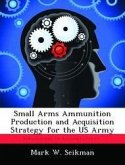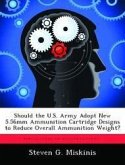The purpose of this research was to investigate the United States Army's ability to correctly estimate and forecast the amount of ammunition it will use in combat operations. Enabling technologies of the weapons systems studied have led to a remarkable reduction in ammunition consumption in all combat operations. These weapon systems include the M1 Abrams main battle tank, M2 Bradley infantry fighting vehicle, AH-64 Apache attack helicopter, and multiple-launch rocket system. The technologies have greatly increased accuracy, precision munitions, survivability, and lethality. Additionally, this study describes how a shaping operation by Air Force, Navy, and multiple-launch rocket system also reduces the amount of ammunition used in combat operations. Historical data from World War II, Operation Desert Storm, and Operation Iraqi Freedom were used as part of the research tool to develop the argument and disprove the theory. The research proves that Field Manual 101-10-1/2 calculations for ammunition consumption are very high and not relevant for today's battlefield. Additionally, it provides information that historically planners have overestimated the amount of ammunition that will be used for an operation. Recommendations for future projects of this nature are made. This work has been selected by scholars as being culturally important, and is part of the knowledge base of civilization as we know it. This work was reproduced from the original artifact, and remains as true to the original work as possible. Therefore, you will see the original copyright references, library stamps (as most of these works have been housed in our most important libraries around the world), and other notations in the work. This work is in the public domain in the United States of America, and possibly other nations. Within the United States, you may freely copy and distribute this work, as no entity (individual or corporate) has a copyright on the body of the work. As a reproduction of a historical artifact, this work may contain missing or blurred pages, poor pictures, errant marks, etc. Scholars believe, and we concur, that this work is important enough to be preserved, reproduced, and made generally available to the public. We appreciate your support of the preservation process, and thank you for being an important part of keeping this knowledge alive and relevant.
Bitte wählen Sie Ihr Anliegen aus.
Rechnungen
Retourenschein anfordern
Bestellstatus
Storno






